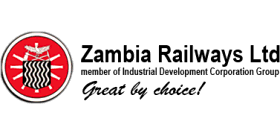 Land-Linked Zambia event highlights Zambia's railway and transport vision for regional integration
Land-Linked Zambia event highlights Zambia's railway and transport vision for regional integration
During the Land-Linked Zambia event held on April 4-5, 2024, Honourable Frank Tayali, Zambia’s Minister of Transport and Logistics, outlined the nation’s ambitious plans to become a central transport hub in Southern Africa. The conference, themed ‘Connecting Zambia by Land,’ brought together industry experts to discuss enhancing trade, investment, and the seamless movement of goods and services across Zambia and beyond.
Minister Tayali highlighted the strategic development of key transport corridors that include the Walvis Bay-Ndola-Lubumbashi Corridor, the Lobito Corridor, the Nacala Corridor, the North-South Corridor, the Beira Corridor and the Central Corridor. These corridors are pivotal in transforming Zambia into a land-linked nexus, leveraging its rich resources and strategic location to boost regional connectivity.
Strategic Corridor Developments
Lobito Corridor: Focus on enhancing road and railway infrastructure and upgrading border posts between Angola and Zambia.
Dar es Salaam and Central Corridors: Rehabilitation of the Great North Road from Kapiri Mposhi to Nakonde, revitalization of the TAZARA railway, and modernization of the Nakonde border post in Tanzania.
Walvis Bay-Ndola-Lubumbashi Corridor: Development of the Livingstone-Sesheke Road, new railway links from Livingstone to Grootfontein, Namibia, and operationalizing the Zambian Dry Port in Walvis Bay.
North-South Corridor: Upgrades to the Zambia Railways Network to improve connections into Zimbabwe.
Nacala Corridor: Enhancement of the Katete to Chanida Road leading to Mozambique and transformation of the Chanida border posts into a one-stop facility.
Beira Corridor: Construction of a new railway from Kafue to Harare, which includes turning these corridors into ‘smart corridors’ equipped with advanced technology for better management and service.
Collaborative Efforts for Regional Development
Minister Tayali emphasized the importance of regional cooperation, noting recent meetings with representatives from Mozambique, Malawi, and Namibia to tackle trade and logistical challenges, particularly along the Nacala Corridor. These discussions are crucial for addressing infrastructure needs and regulatory harmonization to foster a conducive environment for trade.
As Zambia hosts these strategic dialogues, it underscores its role as a critical player in regional development, with the potential to significantly influence economic growth and integration within the Southern African Development Community (SADC).
Zamabia’s Vision for Inclusive Growth
The conference’s discussions focused on the necessity of inclusive, sustainable development strategies that engage all stakeholders — governments, private sector entities, civil society, and international partners. By fostering collaboration, Zambia aims to create robust frameworks that support trade, enhance logistical operations, and build resilient infrastructure across the region.
In the ministerial media briefing session, hosted at the end of the event – Minister Tayali noted the recent memorandum of understanding signed by the heads of state of Zambia and Botswana, wherein they agreed to jointly promote the railway connection from Livingstone, 65 kilometres to the Kazungula Bridge. “I hope you all know that there was a rail component constructed on that particular bridge. It was aimed at what we are trying to achieve now: 65 km from Livingstone to Kazungula and 365 kilometres from the Kazungula Bridge up to a town in Botswana called Mosetse,” he stated. “This is indeed one of those projects that aims to achieve this connectivity. We are also in similar talks with our counterparts in Namibia, where the Namibian National Railway Line terminates at a place called Grootfontein. We hope that this can be extended from Grootfontein up to Sesheke. We believe that from Sesheke, we will then be able to connect to our own National Rail Network via Livingstone, extending from Kafue to a place called Lion’s Den in Zimbabwe,” Minister Tayali added.
This project connects Zambia and Zimbabwe, and feasibility studies have already been completed with the help of the African Development Bank. Another very crucial rail greenfield project is to construct a greenfield line from a place called Nseluka, which will terminate at TAZARA up to Mpulungu. “We do hope that if we can get a rail at Mpulungu, we’ll be able to transship onto water vessels that will then facilitate transport to the Eastern Democratic Republic of the Congo, along with Burundi and Rwanda,” said Minister Tayali.
These efforts are part of what is known as the Central Corridor. “Of course, nearby here in Chipata, we hope to connect Zambia and Malawi through Mchinji,” said Minister Tayali.
These are some of the greenfield projects that have been floated, where Zambia is seeking private sector participation through PPP financing models. Minister Tayali also noted that on average there are about 15,000 trucks on a daily basis traversing the North-South corridor through a major route between Ndola and Lusaka. Just last year, Zambia signed a concession agreement to upgrade this particular road from a single lane to a dual carriageway. This will go a long way in being able to handle more volume of traffic as they promote trade, especially from the south up to the north, to the Democratic Republic of the Congo.
